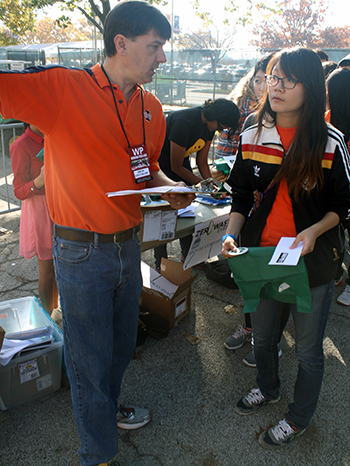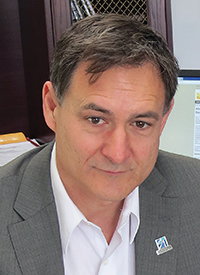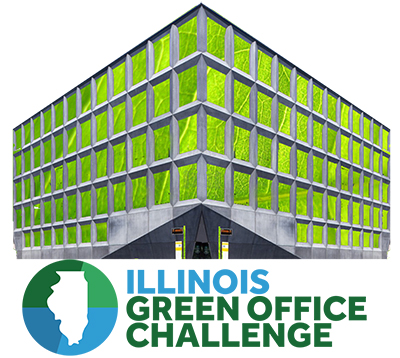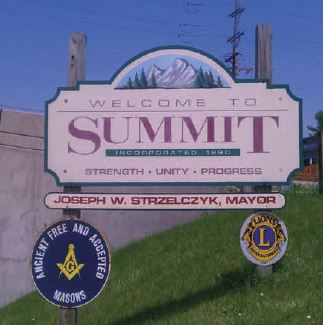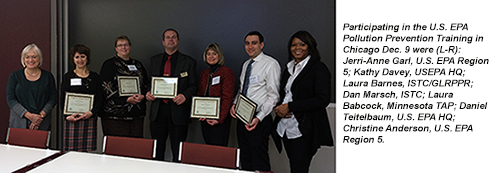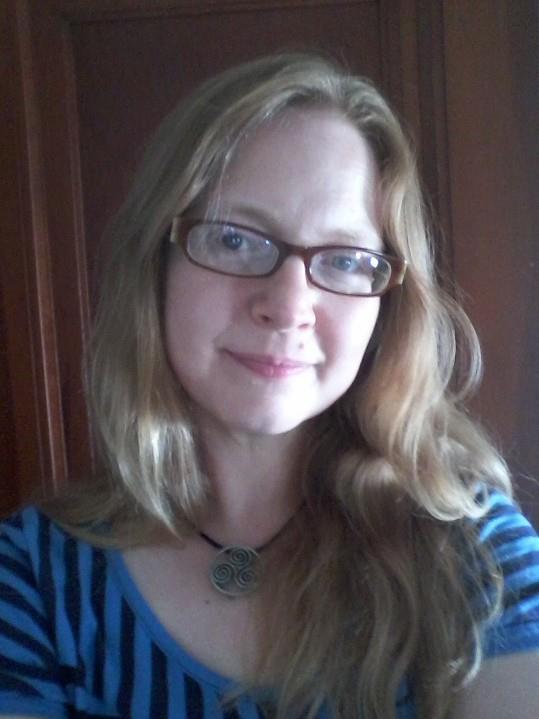 Joy Scrogum has been a sustainability professional for over 13 years, with ISTC’s public engagement and technical assistance programs. Joy has provided support for the Great Lakes Regional Pollution Prevention Roundtable (GLRPPR) since 2001, particularly in the development and maintenance of online resource compilations (Topic Hubs and Sector Resources) on a wide variety of sustainability issues. GLRPPR is a US EPA-funded regional center in the national Pollution Prevention Resource Exchange (P2Rx) network. Joy also played a key role in Greening Schools, a joint project between the IL EPA and ISTC which focused on making K-12 facilities & curricula more sustainable.
Joy Scrogum has been a sustainability professional for over 13 years, with ISTC’s public engagement and technical assistance programs. Joy has provided support for the Great Lakes Regional Pollution Prevention Roundtable (GLRPPR) since 2001, particularly in the development and maintenance of online resource compilations (Topic Hubs and Sector Resources) on a wide variety of sustainability issues. GLRPPR is a US EPA-funded regional center in the national Pollution Prevention Resource Exchange (P2Rx) network. Joy also played a key role in Greening Schools, a joint project between the IL EPA and ISTC which focused on making K-12 facilities & curricula more sustainable.
Joy’s most recent work with ISTC has centered around the Sustainable Electronics Initiative (SEI), for which she serves as coordinator. SEI is dedicated to the development and implementation of a more sustainable system for designing, producing, using, and managing electronic devices. She managed SEI’s International Sustainable Electronics Competition for college and university students; coordinates consortium meetings on the University of Illinois at Urbana-Champaign campus related to sustainable electronics research, education, and operations; and taught a class in collaboration with the UI Technology Entrepreneur Center in the College of Engineering (ENG/TE 498: Sustainable Technology: Environmental and Social Impacts of Innovations) which used electronic products as the framework for discussion. Joy also currently works on Zero Waste Illinois projects.
With a MS in Natural Resources and Environmental Sciences from the University of Illinois at Urbana-Champaign, Joy says her education has prepared her for the complex considerations associated with sustainability. “It may seem strange for someone with a background in wildlife ecology to be talking about design and end-of-life management related to electronics, but I think that ecological perspective is exactly what’s needed. Whether you’re talking about the life cycle of an organism or a product, you have to consider interactions with the larger system when it comes to sustainable solutions. It’s useful to think of products, services—any human activity—in the context of the ecosystem which is constantly impacting, and being impacted by, us. Helping students develop that sort of worldview, regardless of their field of study, is my favorite part of my job. I feel education for sustainability is a critical part of the University’s role in today’s society.”
Joy’s other duties include writing grant proposals and reports, blog posts, and fact sheets; contributing to social media campaigns; project development; and presenting at professional and public events such as the Naturally Illinois Expo. She also enjoys reviewing applications for the annual Illinois Governor’s Sustainability Awards Program, the oldest continuously running environmental awards program in the US. She is a member of the International Society of Sustainability Professionals, the Reuse Alliance, and the Illinois Food Scrap Coalition.


